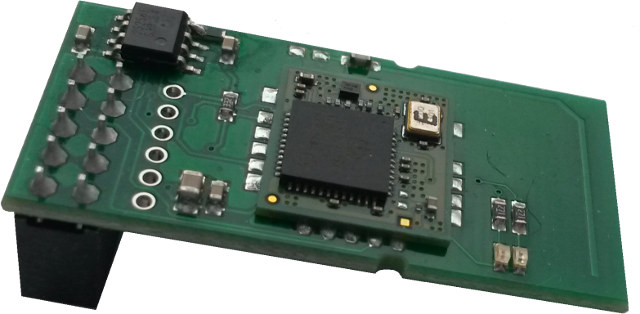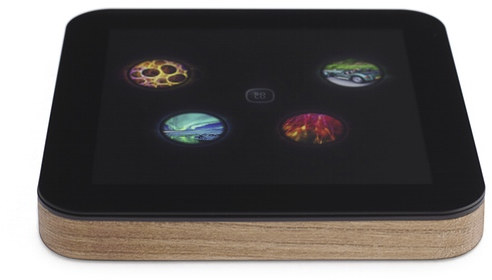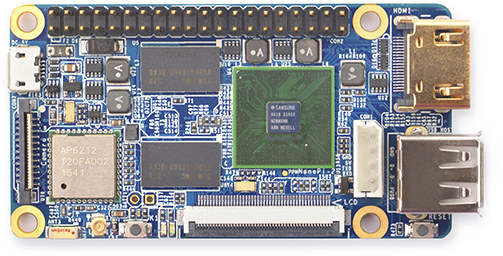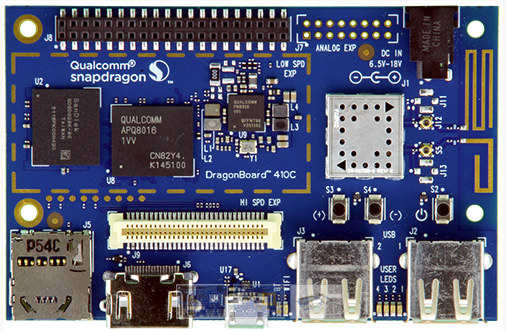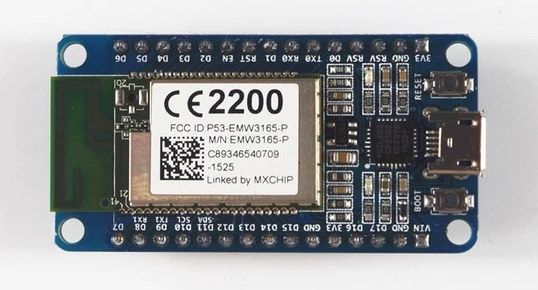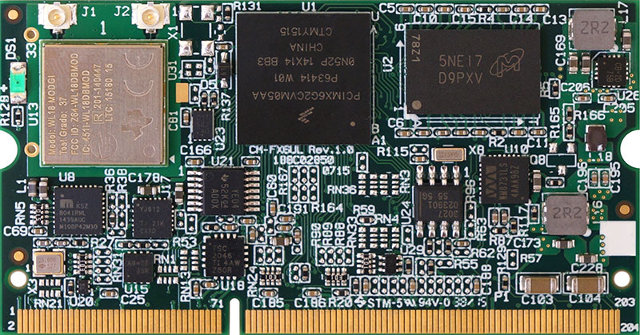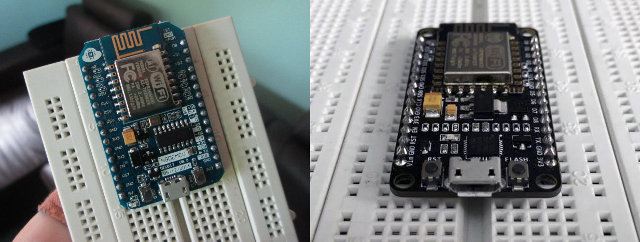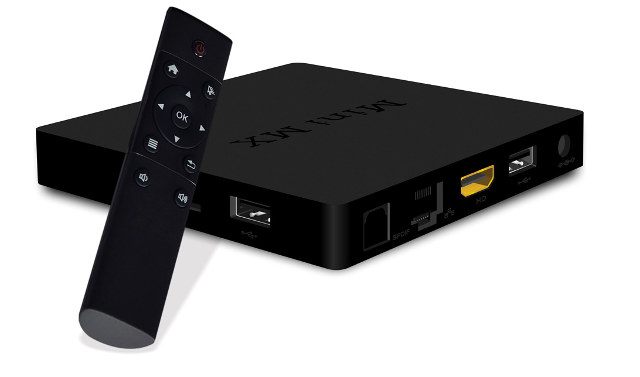Z-Wave is one of the low power wireless communication protocols used for automation, and supported, for example, by gateways such as Samsung SmartThings Hub or Vera3. Z-Wave Plus is a certification program used to identify Z-wave 5th Generation hardware platform, allowing a greater range up to 45 meters, 50% improvement in battery life, 250% more bandwidth, and providing a standardized method for Over the Air firmware updates (OTA), among other things. Zwave.me, a startup registered in Switzerland, is specializing in Z-Wave products and solutions, and among their other products they’ve also designed Z-Wave hardware to turn the Raspberry Pi board and other compatible hardware into a Z-Wave gateway. RazBerry module will fit into the 26 or 40-pin header found on Raspberry Pi boards, and comes with the following specifications: Sigma Designs ZM5202 Z-Wave transceiver module Frequencies – Storage – 32KB SPI flash for network data CPU/MCU Interface – UART (Tx/Rx) […]
Solu Touch-Enabled Portable mini PC Runs a Cloud-linked OS on Nvidia Tegra K1 (Crowdfunding)
Solu Machines, has startup based in Finland, as decided to re-invent the computing experience. To achieve this they’ve created a battery powered mini PC based on Nvidia Tegra K1 processor and 4GB RAM, included a touch screen on the top cover that can be used as a tablet on the go, and as a touchpad when connected to a monitor, while creating a new OS called SoluOS with a new type of user interface and that stores lots of the data in the cloud, yet allows the device to run offline, and there’s more… Solu mini PC specifications: SoC – Nvidia Tegra K1 4-Plus-1 ARM Cortex-A15 CPU @ 2.3GHz with 192-core Kepler GPU System Memory – 4GB LPDDR3 Storage – 32GB “cache capacity” Display – 1440 x 1440, 450ppi, with an edge-to-edge touch Video Output – Support for up to 4K monitors apparently via USB type-C connector Connectivity – Dual-band […]
NanoPi2 is a Tiny Board with Samsung S5P4418 Processor, WiFi and Bluetooth Connectivity
FriendlyARM released NanoPi board this summer, a small and inexpensive development board based on Samsung S3C2451 ARM9 processor with both WiFi and Bluetooth connectivity. The company has now unveils a more powerful, and slightly wider, version with NanoPi2 featuring Samsung S5P4418 quad core Cortex A9 processor with 1GB RAM, AP6212 wireless module, a new HDMI output, and the same connectors for I/Os and LCD displays. NanoPi2 specifications: SoC – Samsung S5P4418 quad core Cortex A9 processor @ up to 1.4GHz System Memory – 1GB 32bit DDR3 Storage – 2 x Micro SD Slot Connectivity – 802.11 b/g/n WiFi and Bluetooth LE 4.0 via AP6212 module Video Output / Display I/F- 1x HDMI 1.4a, 0.5 mm pitch SMT FPC seat for type-A full-color LCD (RGB: 8-8-8) Camera – 24-pin DVP interface USB – 1x USB Host port; 1x micro USB 2.0 OTG port for power and data Expansions Headers – 40-pin […]
Qualcomm DragonBoard 410c Board Now Supports Windows 10 IoT Core
Microsoft announced Windows 10 IoT Core for Raspberry Pi 2 and Minnowboard MAX boards a few months, and now the company has added a new ARM board to their Windows 10 IoT program with the soon-to-be-available Qualcomm DragonBoard 410c development board compliant with 96Boards specifications. Windows 10 IoT Core for DragonBoard 410c adds support for onboard WiFi and Bluetooth, as well as DirectX graphics on top of features already supported on the Raspberry Pi 2. To get started, you’ll need a computer running Windows 10, and follow DragonBoard’s Winfows 10 IoT Core guide. I assume most people familiar with Linux operating systems won’t suddenly jump ship to run a Windows operating systems, but Windows developers who got used to work with Visual Studio may be more comfortable with Microsoft’s environment. Out of curiosity, I’ve checked out if anybody had done any project with Windows 10 IoT core, and was surprised […]
$10 WiFiMCU Board is a NodeMCU Clone Based on EMW3165 Module
Yesterday I wrote a short tutorial for NodeMCU board, and one visitor mentioned WiFiMCU board that has a similar form factor as NodeMCU, and while it is more expensive at about $10 on Aliexpress or Ebay, it is also more powerful and provides more I/Os thanks to its EMW3165 module including an STM32 Cortex M4 micro-controller with 128KB RAM, 512KB flash, a Broadcom WiFi module, and 2MB SPI flash. WiFiMCU specifications: MCU – STMicro STM32F411CE Cortex-M4 microcontroller @ 100MHz with 128KB RAM, 512KB flash Storage – 2MB SPI flash WiFi – Broadcom 802.11 b/g/n RF Chip: Modes – Station, Soft AP and Station+Soft AP Security – WEP, WPA/WPA2, PSK/Enterprise 16.5dBm@11b, 14.5dBm@11g, 13.5dBm@11n Receiver sensitivity – -87 dBm 2x 15-pin headers with 17x GPIO Pin 3x UARTs 5x ADC, 1x SPI, 1x I2C, 1x USB SWD debug interface 11x PWM Misc – Boot and Reset buttons Power Supply – 5V via […]
Compulab Unveils CL-SOM-iMX6UL Freescale i.MX 6UltraLite System-On-Module and SBC-iMX6UL SBC
Compulab has launched a CL-SOM-iMX6UL system-on-module based on Freescale i.MX 6UltraLite ARM Cortex A7 processor with up to 1GB DDR3 and 32GB eMMC flash. The module can be coupled with SB-SOM-iMX6UL carrier board to form SBC-iMX6UL single board computer targeting industrial and embedded applications. CL-SOM-iMX6UL specifications: SoC – Freescale i.MX6 UltraLite Cortex-A7 processor @ 528MHz System Memory – Up to 1GB DDR3 Storage – Up to 32GB on-board eMMC, Up to 1GB on-board SLC NAND, SPI flash, I2C EEPROM Connectivity – Dual-band, dual-antenna 2×2 802.11a/b/g/n WiFi, Bluetooth 4.1 BLE (Ti WiLink 8), 10/100M Ethernet PHY (with optional bypass) Audio – WM8731 audio codec with stereo line-out, line-in, mic, S/PDIF input/output Other I/Os via 204-pin SODIMM edge connector Display Parallel 24-bit display interface up to 1366 x 768 Touchscreen 4/5/8-wire resistive touch-screen support Capacitive touch-screen support through SPI interface USB – 1x USB2.0 OTG + 4x USB2.0 host ports Up to […]
Getting Started with NodeMCU Board Powered by ESP8266 WiSoC
Since ESP8266 is now so popular, I’ve recently bought a NodeMCU board to try it. I selected this board because the latest version of the board is breadboard-friendly, integrates a USB to serial chip, and it can be powered by a simple USB to micro USB cable. I also noticed a ESP8266 tutorial with NodeMCU firmware by SwitchDoc Labs the other day (using ESP-12 and Adafruit Huzzah), which I applied to my NodeMCU board, but since I encountered a few issues, I decided to report my findings, and write my own little getting started guide to switch on/off LED and GPIOs using a web interface. NodeMCU v0.9 and NodeMCU v1.0 If you are going to purchase a NodeMCU board it’s important to know there are two official versions: NodeMCU v0.9 with ESP-12 module NodeMCU v1.0 with ESP-12E module The main complain about NodeMCU v0.9 is that while it fits on […]
$47 Beelink MINI MX Android 5.1 TV Box Features Amlogic S905 Processor
It really feels like Christmas is around the corner, as deals on new and existing products keep on coming. About two weeks ago, I noted one of the first TV boxes based on Amlogic S905 processor, MXQ Pro, was starting (pre-)selling for as low as $48. Not bad for a device that is supporting HDMI 2.0 and 10-bit HEVC up to 4K @ 60 fps. Since then the price has gone up a little to $52 shipped, but Beelink MINI MX has started to up show up on a few sites, and the device is pre-sold for $46.89 on GearBest with GBMINIX coupon. The case is very similar to Allwinner H3 based Beelink X2, and the specifications similar to the ones for MXQ Pro: SoC – Amlogic S905 quad core ARM Cortex-A53 @ up to 2.0GHz with penta-core Mali-450MP GPU @ 750 MHz System Memory – 1GB DDR3 Storage – […]


